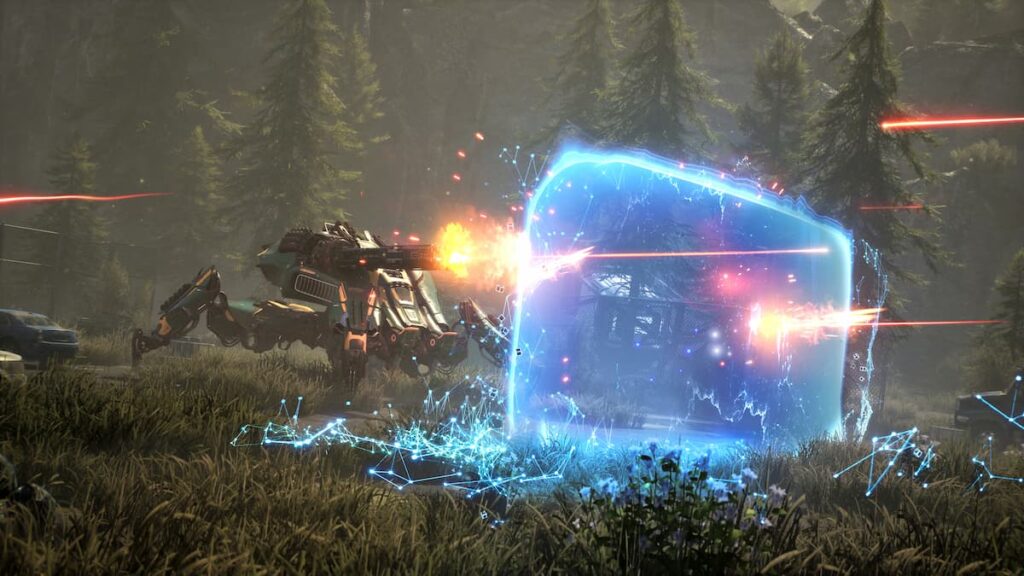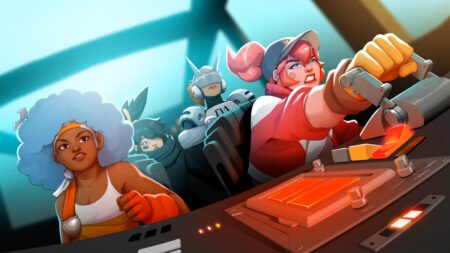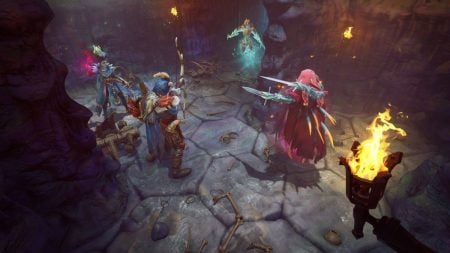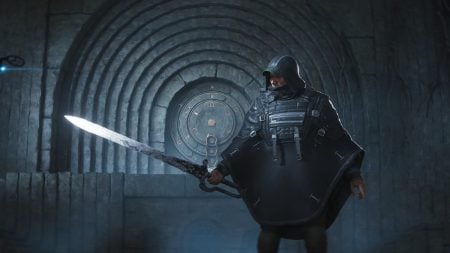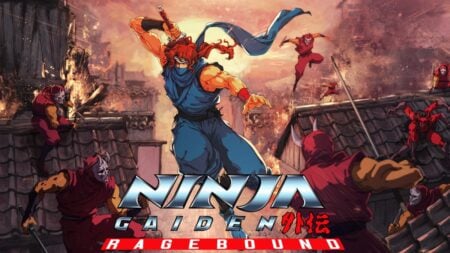Skip To...
Steel Hunters has a lot of mech fans excited. It’s an ambitious mash-up of multiple genres, blending elements of hero shooters, MOBAs, and extraction shooters into a third-person mech brawler. Developed by DPS Games and published by Wargaming, the game puts players in control of hulking, weaponized mechs known as Hunters, each with unique abilities and playstyles. It’s a compelling premise, one that I think even non-mech diehards can get behind. After spending time with the game during a preview event earlier this month, I came away impressed by its beauty and performance but questioning some of its core combat mechanics.
Beauty in the Wreckage
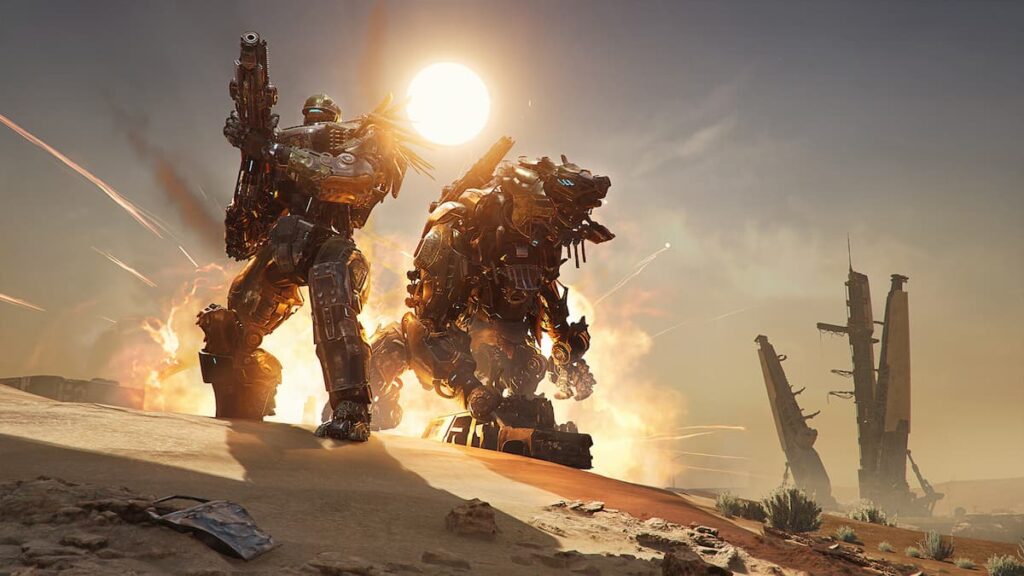
In Steel Hunters, teams of two drop into large, open maps, scavenging for resources and power-ups while battling both AI enemies and other players. The goal is to gear up, survive, and make it to the final extraction phase, where the remaining squads clash for a chance to escape. Each mech, or “Hunter,” comes with a unique weapon loadout and abilities, drawing inspiration from hero shooters, but the pacing is more methodical. It’s a tactical shooter, not a high-speed arena brawler. Victory hinges on smart positioning, ability management, and surviving long enough to dominate the final showdown.
It’s worth nodding the hat to Steel Hunter’s beautiful presentation. The mechs are superbly detailed, their designs conveying both personality and raw firepower. The game’s post-apocalyptic maps, dotted with crumbling buildings and open battlefields, make for striking backdrops to its intense engagements. Performance-wise, it ran smoothly, with crisp animations and impressive destruction physics. Even if the latter sometimes lacked the weighty impact you’d expect from towering war machines smashing through structures.
The Weight of Combat, For Better or Worse
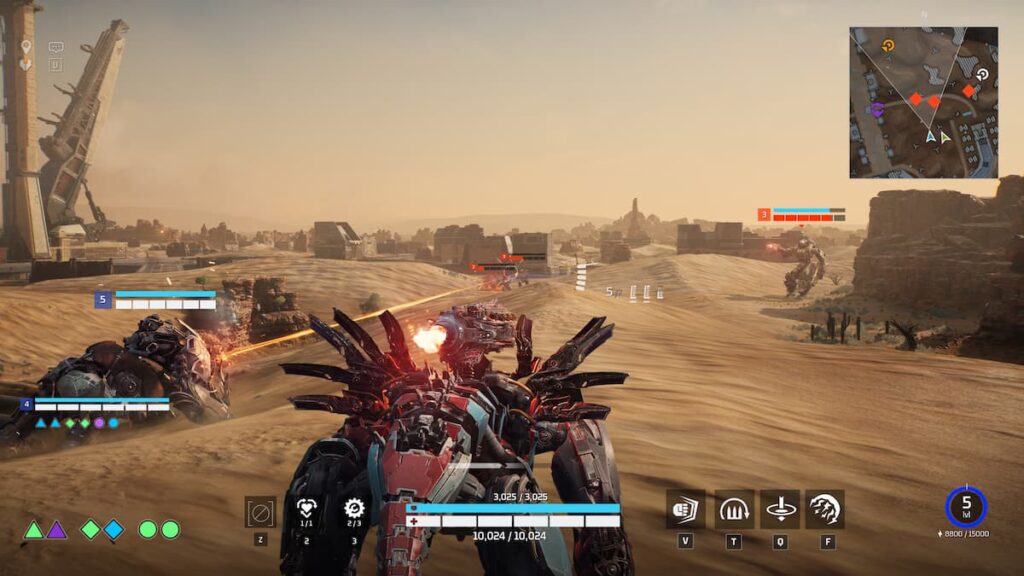
DPS has been clear in labeling the game as a third-person tactical shooter. Unlike twitch-based shooters, Steel Hunters emphasizes positioning, teamwork, and the use of abilities. Different Hunters have distinct skill sets; some rely on brute force, while others use mobility, stealth, or support mechanics to shift the tide of battle. This variety lays the foundation for strategic teamplay, which could become the game’s strongest selling point… if it’s further refined. More on that later. But first, a word on pacing.
While the slower pace of combat is understandable (these are massive mechs, after all), I found it often crossed a line to feeling sluggish. Movement is deliberately weighty, but the stamina system further compounds the issue. Boosting or dashing drains stamina quickly, forcing players to wait for cooldowns before repositioning. I appreciate the need for strategic movement, but the downtime between bursts of action feels a little excessive.
The same issue applies to weapons. While some abilities feel powerful, like missile barrages or deployable shields, many of the standard attacks lack punch. Gunfire and reload speeds feel methodical to a fault, which makes extended fights drag on rather than escalate in intensity. I wonder if increasing the pace of engagements, whether by tweaking reload speeds or adjusting ammunition capacities, would make its gameplay more engaging.
Untapped Combo-Wombo Potential
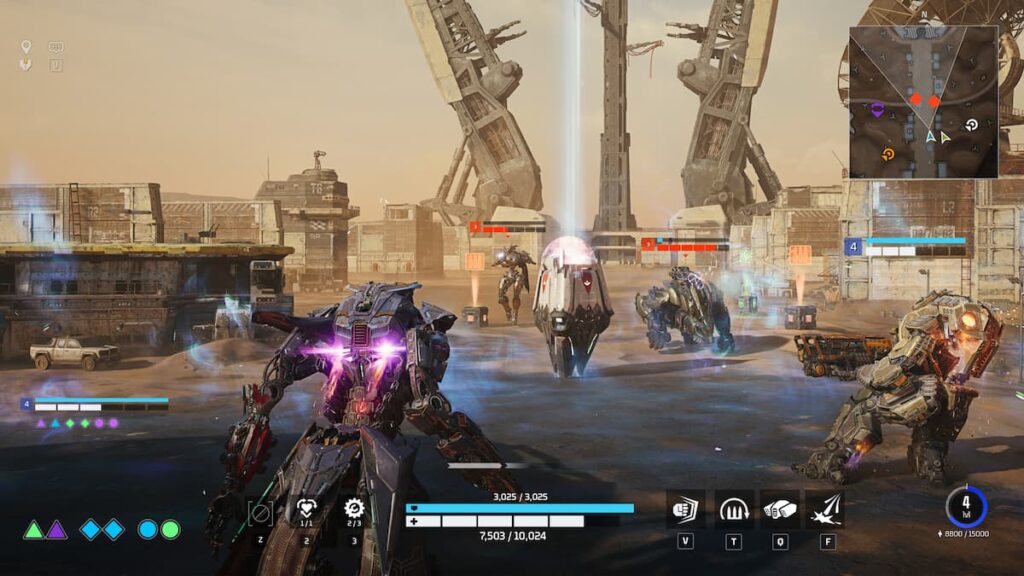
Given its hero shooter DNA, I walked away from my preview session feeling as though Steel Hunters should lean harder into the tactical interplay between abilities. The game already features some cool utility, like dashes, stealth mechanics, and shields, but it stops short of offering the kind of synergy-driven utility seen in games like Valorant or Counter-Strike. I know those games are very different from Steel Hunters, but the core of their design is the same. They’re shooters in which the combination of utility forms the foundation of what makes them tactical.
In Steel Hunters, though, the absence of staples like stuns, flashes, or smokes feels like a missed opportunity. For me, these mechanics would add more layers of depth, forcing teams to coordinate their engagements rather than simply trade gunfire while waiting for utility to recover from cooldown– utility that, as I’ve already mentioned, doesn’t quite offer the opportunity for combinations and team synergy I would like.
The foundation is there: distinct mechs with unique abilities, a hero shooter framework layered onto an extraction-style PvP format. But when it comes to tactical utility Steel Hunters feels undercooked. It’s missing the kind of teamplay-driven tools that define games like Valorant or Rainbow Six Siege.
It’s odd because mechs should be brimming with utility. These are massive, heavily armed war machines. Why don’t they have more ways to manipulate the battlefield?
PvE Lags Behind

To be clear, I did find the PvP engaging even with those aforementioned issues. It’s good, and I think over time, it’s highly likely to offer the depth and thrills I’m looking for. One aspect of the experience I’m less convinced on in its potential as of right now is the PvE. It feels underdeveloped. AI-controlled enemies serve as filler rather than meaningful threats, offering little tactical challenge. They lumber around the map and are easily disposed of (even as they scale with your level through each game), seemingly serving mostly as a way of replenishing supplies rather than really offering progression opportunities and the chance to score meaningful gear I cared about losing.
Of course, it’s unclear if the PvE experience will evolve as the game approaches launch. If the primary game loop is about gathering loot and leveling up before high-stakes extractions, then PvE encounters need to be more engaging rather than just an afterthought.
When you combine that with loot that to me felt rather uninteresting, I found myself wanting to rush toward PvP engagements rather than taking the time to really explore the map, engage in PvE, and find compelling loot.
Solid Foundation, Needs Refinement
Steel Hunters has a lot going for it: a striking aesthetic, kickass mechs, customization options, and a unique genre blend that sets it apart. But its combat and movement mechanics still need fine-tuning. The balance between weighty mech movement and fluid action isn’t quite there yet, and the lack of robust utility mechanics limits the tactical depth that could make the game truly shine. If DPS Games can refine these aspects –tightening movement, improving ability synergy, and making encounters feel more dynamic– Steel Hunters could carve out a solid niche in the multiplayer market.
For now, the game remains an intriguing experiment, one with potential but also some clear hurdles to overcome. But that’s ok. We’re only launching into Early Access here, and this is a live service package that is sure to improve over time. Here’s hoping that future updates bring the adjustments needed to push Steel Hunters from a promising concept to a must-play experience.

